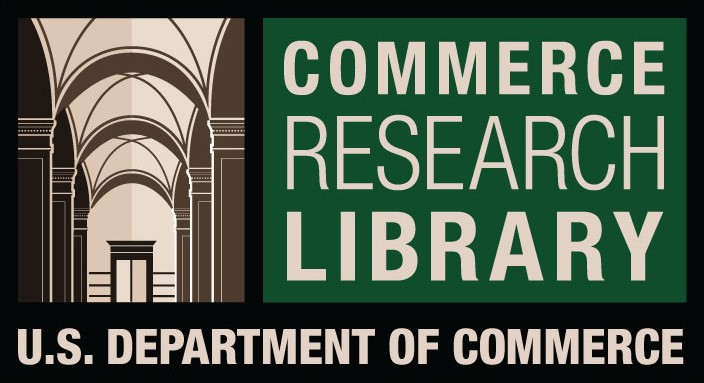BARRIER FACED BY SMES TO ADOPT DIGITAL MARKETING: SPECIAL REFERENCE TO UTTAR PRADESH
DOI:
https://doi.org/10.61841/01xwj135Keywords:
Digital marketing, tools, , small medium enterprises, marketing, ICTAbstract
In the 21st century, where the world is driven by technology, digitalization plays a really vital role in running a trade in order to maximize the benefit and make a mark in the developing trade industry. SMEs (Small-Medium Enterprises) are the backbone of the economy in India and thus it becomes imperative for them to change with digitization and adopt different digital marketing tools for their business. While adopting these tools to enhance their performance many SMEs have failed or improperly adopted the digital marketing. Through this research paper we will be highlighting challenge that SMEs in Uttar Pradesh have to face while adopting digital marketing. The objectives of the study are an investigation of barriers to adopt digital marketing tools by SMEs of Uttar Pradesh and testing the significance of these barriers with digital marketing adoption in context to SMEs of Uttar Pradesh. ANOVA and rating system based on Mean Score were used to identify and test significance of these barriers. All the barriers identified have significant relationship with digital marketing adoption. Lack of skilled ICT, Inadequate information and resistance to change were identified as potential barrier while adopting digital marketing. Implications for future, more quantitative studies are required to help the SMEs to adopt new technologies and how to avoid face the hurdles in order to achieve profitability.
Downloads
References
1. Abdel Nasser H. Zaied (2012) 'Barriers to E-Commerce Adoption in Egyptian SMEs', I.J. Information Engineering and Electronic Business, 3(), pp. 9-18 [Online]. Available at: DOI: 10.5815/ijieeb.2012.03.02
2. BCG and IAMAI. ( November 2014). India @ digital.Bharat. BCG(Boston Consulting Group)and IAMAI(Internet and Mobile Association of India).
3. Bolongkikit J., Obit J., Asing J., & Tanakinjal G., ―An exploratory research of the usage level of e- commerce among SMEs in the West Coast Sabah, Malaysia‖, 2006. Available on line at: http://www.arraydev.com/commerce/JIBC/2006-08/Bolongkikit.asp.
4. Boston Consulting Group. (2013, April 25). Capitalizing on India’s “Digitally Influenced” Consumers. Retrieved March 4, 2015, from bcgperspectives.com: www.bcgperspectives.com/content/articles/center_consumer_customer_insight_globalization_from_buz z_to_bucks
5. Ching, H. L., & Ellis, P. (2004). Marketing in cyberspace: what factors drive e-commerce adoption?. Journal of Marketing Management, 20 (3-4), 409-429.
6. Chong, A. Y.-L., Chan, F. T. S., & Ooi, K.-B. (2012). Predicting consumer decisions to adopt mobile commerce: Cross country empirical examination between China and Malaysia. Decision Support Systems, 53(1), 34–43. doi:10.1016/j.dss.2011.12.001
7. Davis, C. H., & Vladica, F. (2006). Use of internet technologies and e-business solutions: a structural model of sources of business value among Canadian micro-enterprises. Proceedings of the 39th Annual HICSS Conference.
8. Dr.P.M.Mathew. (2014). MSME Definition in India: The Present State and the Imperatives . New Delhi: Confederation of Micro, Small & Medium Enterprises (FICCI-CMSME)and Institute of Small Enterprisesand Development (ISED)
9. Gaikwad, M. & Kate, P.H. (2016). E-marketing: A modern approach of business at the door of consumer clear. International Journal of Research in Commerce & Management, 7(9), 56-61.
10. Hashim, J. (2007). Information Communication Technology ( ICT ) Adoption Among SME Owners in Malaysia. International Journal of Business and Information, 2(2), 221–240.
11. Internet World Stats. (2014). Internet Usage in Asia. Retrieved from http://www.internetworldstats.com/stats3.htm
12. International Telecommunication Union. (2011). Measuring the Information Society 2011. Geneva, Switzerland International Telecommunication Union (ITU).
13. Kaynak E., Tatoglu E. & Kula V., ―An analysis of the factors affecting the adoption of electronic commerce by SMEs: evidence from an emerging market‖, International marketing Review, 2005, 22(6): 632 – 640.
14. Kshetri N., ―Barriers to e-commerce and competitive business models in developing countries: A case study‖, Electronic Commerce Research and Applications, 2007, 6: 443–452.
15. Lowry, G., Singh, M. and Scollary, A. (1999) “Electronic commerce initiatives in Australia: identifying opportunity, meeting challenges, and measuring success” Proceedings of the 10th Australasian conference on information systems, pp. 532-541. Wellington, New Zealand 1-3 December.
16. Morgan, A., Colebourne, D., & Thomas, B. (2006). The development of ICT advisors for SME businesses: An innovative approach. Technovation, 26(8), 980–987. doi:10.1016/j.technovation.2005.09.001
17. Olatokun W. & Kebonye M., ―e-Commerce Technology Adoption by SMEs in Botswana‖, International Journal of Emerging Technologies and Society, 2010, 8(1): 42 – 56.
18. Pires, G.D., Aisbett, J. (2001). A dual Marketing and Informational Perspective to E- Commerce Adoption. The Newcastle University Research Publications.
19. Porter, M. E. (2001). Strategy and the Internet. Harvard Business Review, 79 (3), 63-78.
20. Pradhan P. Digital Marketing & SMEs: An Identification of Research Gap via Archives of Past Research International Journal of Applied Engineering Research ISSN 0973-4562 Volume 13, Number 8 (2018)
pp. 6089-6097
21. Qiang, C. Z. W. (2010). Broadband infrastructure investment in stimulus packages: relevance for developing countries. Info, 12 (2), 41-56.
22. Rakhmanov E., ―The Barriers Affecting E-government Development in Uzbekistan‖, 4th International Conference on Computer Sciences and Convergence Information Technology, 2009. ICCIT '09, 24-26 Nov. Seoul, South Korea: 1474 – 1480.
23. Taiminen, Heini & Karjaluoto, Heikki. (2015). The usage of digital marketing channels in SMEs. Journal of Small Business and Enterprise Development. 22. 633-651. 10.1108/JSBED-05-2013-0073.
24. UNCTAD. (2010). Information Economy Report 2010: ICTs, Enterprises, and Poverty Alleviation. New York and Geneva: United Nations.
25. UNCTAD. (2011). Information Economy Report 2011: ICTs as an enabler for private sector development. New York and Geneva: UNCTAD.
Downloads
Published
Issue
Section
License

This work is licensed under a Creative Commons Attribution 4.0 International License.
You are free to:
- Share — copy and redistribute the material in any medium or format for any purpose, even commercially.
- Adapt — remix, transform, and build upon the material for any purpose, even commercially.
- The licensor cannot revoke these freedoms as long as you follow the license terms.
Under the following terms:
- Attribution — You must give appropriate credit , provide a link to the license, and indicate if changes were made . You may do so in any reasonable manner, but not in any way that suggests the licensor endorses you or your use.
- No additional restrictions — You may not apply legal terms or technological measures that legally restrict others from doing anything the license permits.
Notices:
You do not have to comply with the license for elements of the material in the public domain or where your use is permitted by an applicable exception or limitation .
No warranties are given. The license may not give you all of the permissions necessary for your intended use. For example, other rights such as publicity, privacy, or moral rights may limit how you use the material.









